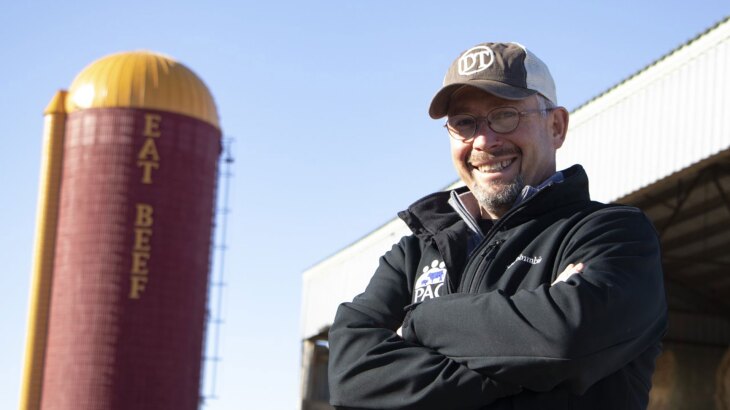The FDA is in the final phase of Guidance for the Industry No. 263 on livestock antibiotic labels. For years, the FDA has been trying to get all livestock antibiotics under veterinary oversight.
“This will end over-the-counter sales of antibiotics, and livestock owners will need a prescription from a veterinarian if they want to continue to have access,” Craig Payne, a veterinarian at the University of Missouri Extension said.
In 2017, the FDA ordered feed antibiotics like Tetracycline and Penicillin to be pulled from store shelves and began requiring them to be administered under orders from a licensed veterinarian. That order also included antibiotics delivered by water.
“The public has an interest in what farmers are doing to care for livestock, and there’s an expectation that we are going to use antibiotics judiciously with livestock,” Jennifer Roberts, a veterinarian with Boehringer Ingelheim said.
“As veterinarians, we want to make sure that we are judiciously using antibiotics, and this regulation allows us to have a little more input on the farm and to have conversations with farmers about following medication protocol,” she said.
Under the FDA’s newest guidance, most antibiotics meant for any species of livestock will be affected. Those include cephapirin, cephapirin benzathine (ToDay and ToMORROW), penicillin G procaine, and penicillin G benzathine (Masti-Clear, Go-dry, Albadry Plus).
To accesses these medications, you’ll need to have a prescription from your veterinarian.
There will be some exceptions for vaccines, dewormers, fly control, teat sealants, hormone implants, and homeopathic medications.
In addition, bottles will require the words “Caution: Federal law restricts this drug to use by or on the order of a licensed veterinarian.”
The new rules go into effect June 11th.
According to November’s Cattle on Feed Report, Nebraska now leads the nation in cattle feeding as tighter supplies continue to reshape regional market power and long-term price dynamics.
November 24, 2025 11:47 AM
·
The U.S. Department of Labor (DOL) estimates that the move will save farmers and ranchers $2.5 billion each year. The group warns that new methods for calculating the adverse-effect wage rate would result in lower pay for foreign workers.
November 24, 2025 11:32 AM
·
Tyson’s closure reflects deep supply shortages in the U.S. cattle industry, tightening packing capacity, weakening competition, and signaling more volatility ahead for cow-calf producers and feedyards.
November 21, 2025 07:02 PM
·
Screwworm.gov has targeted resources for a wide range of stakeholders, including livestock producers, veterinarians, animal health officials, wildlife professionals, healthcare providers, pet owners, researchers, drug manufacturers, and the general public.
November 21, 2025 02:09 PM
·
Mike Steenhoek of the Soy Transportation Coalition discusses industry reactions to the proposed Union Pacific–Norfolk Southern merger, the Surface Transportation Board’s review process, and current conditions on the Mississippi River.
November 21, 2025 01:59 PM
·
Richard Gupton of the Agricultural Retailers Association explains a new resource designed to help farmers comply with ESA-related pesticide label requirements.
November 21, 2025 01:56 PM
·
Sen. Roger Marshall discusses the Senate’s unanimous passage of the Whole Milk for Healthy Kids Act and what expanded milk options could mean for students and dairy farmers. Industry groups say it is a win for student nutrition and dairy producers.
November 21, 2025 01:19 PM
·
Crop producers face tightening credit and lower incomes, while strong cattle markets continue to stabilize finances in livestock-heavy regions.
November 21, 2025 11:58 AM
·
An outbreak of Equine Herpesvirus Type 1 (EHV-1) first appeared after livestock events in Texas and Arizona, and some horses have already died.
November 21, 2025 10:47 AM
·

















